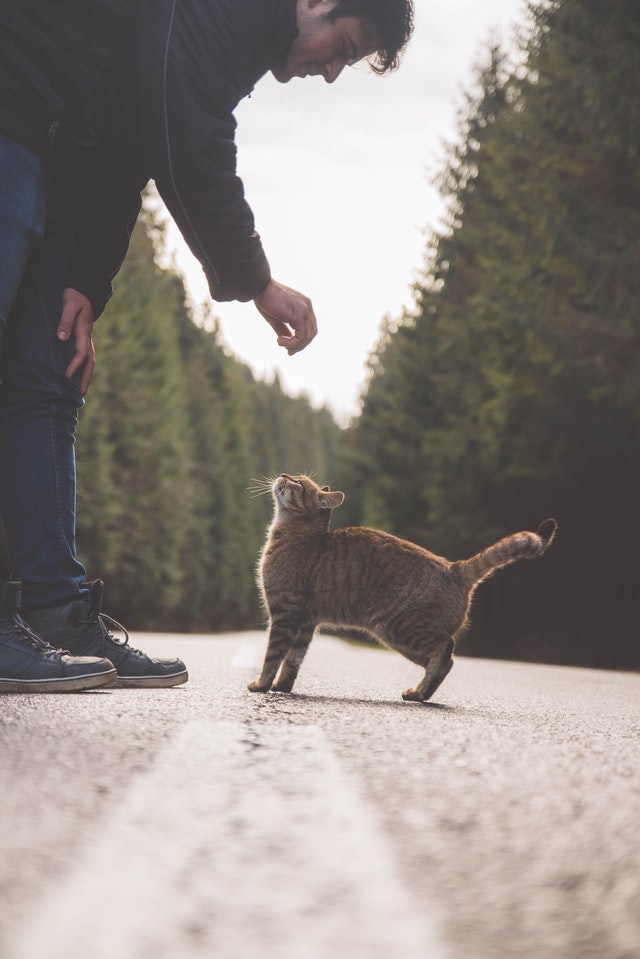
Innumerable studies show the outsize harm that domestic cats do to local bird populations. But stray and feral cats are also a big problem, and for that, state officials in Hawaii have the grim receipts.
Endangering an Endangered Species
In September 2020, the Sacramento Bee reported that the Hawaii Department of Land and Natural Resources had trail camera footage of one lone feral cat’s slaughter, over three days in August, of at least nine Hawaiian petrel chicks. This endangered indigenous species can only be found in the Hawaiian islands. Scientists point out that, due to their evolution in an environment without mammalian predators, the state’s native birds have not developed any natural defenses.
The researchers who found the chicks’ bodies estimated their ages at barely 1 month old. The sheer number of birds destroyed in this single series of killings officially makes it a “massacre,” according to officials. The issue, of course, is that more than one feral cat is behind Hawaii’s current “cat crisis.”
Breeding Uncontrollably
The estimated 2 million feral cats that freely roam the islands are considered by experts to be an invasive predatory species. And according to the Hawaiian Invasive Species Council, they are perhaps the most devastating. According to the Council, the Hawaiian feral cats are technically members of the same species as domestic cats. However, their range, behavior, and ways of life differ.
About half the feral cats are located on the “Big Island” of Hawaii. Oahu alone may be home to more than 300,000. More than 15,000 are estimated to live on Kaua’i, the stunningly beautiful “Garden Island”—and the place where the nine petrel chicks were killed.
European colonists originally brought cats to the islands, after using them as natural rodent-control systems on shipboard. The earliest documentary evidence attesting to the presence of wild cats in Hawaii is a passage in the writings of explorer William Breckenridge dating to 1840. After touring Honolulu in 1866, Mark Twain wrote that he had seen “Tom cats, Mary Ann cats…platoons of cats…regiments of cats…millions of cats.”
While some of the ships’ cats that fetched up in Hawaii eventually became beloved pets, many others were allowed to fend for themselves in the wild. Because no larger predatory mammals existed in Hawaii, the wild cats were able to survive, thrive, and reproduce amidst a rich buffet of many smaller, more vulnerable native animals.
Slaughtering Wildlife and Spreading Parasitic Infection
Feral and stray cats are driven by the instinct to kill, even if they are healthy and well-nourished. They are extremely skilled predators, able to slaughter breeding adult birds as well as their young. If even one feral cat is allowed to roam unchecked, it is capable of completely wiping out an entire colony of nesting birds.
More than 50 percent of Hawaii’s original 130 species of native birds are already extinct, due to a variety of causes. The presence of large numbers of feral cats makes life more precarious for the remaining bird species, many of which are also endangered. In addition to the petrel and other seabirds, the native species that are particular targets of the islands’ wild cats include the palila and other songbirds, as well as quail, Hawaiian moorhens, and other ground-nesting birds.
Feral cats also are responsible for the propagation of the sometimes-deadly parasite Toxoplasma gondii, which continues to be widely found in both mammal and human populations. Experts believe that the disease toxoplasmosis is among the five most overlooked human parasitic infections, with tens of millions of Americans infected. Researchers have identified the T. gondii parasite deposited in cat feces as responsible for the deaths of local monk seals.
Practicing Trap, Neuter, Return
In recent years, some of the damage from feral cats has been mitigated, thanks to Hawaii’s teams of land managers and predator controllers, but the nine dead petrels on Kaua’i show that the problem is far from solved. As state policy, Hawaii has to date relied on the capture, spaying or neutering, and adoption of feral cats.
Some groups, like the Kauai Community Cat Project, believe in the efficacy of TNR, which stands for “trap, neuter, release.” This entails catching feral cats, having them sterilized by a veterinarian, and releasing them back where they were found, always supported by plenty of regular meals.
The KCCP volunteers believe that their work is a humane way to upgrade the wild cats’ living conditions, address the overwhelming overpopulation problem, and curb the loss of native birds. The Hawaiian Humane Society has humane traps available for rent on Oahu. The city and county of Honolulu subsidizes free sterilization of free-roaming cats at participating veterinary providers.
Government Opposition to TNR
But many scientists, and Hawaii’s Department of Land and Natural Resources (DLNR), feel that TNR does not significantly decrease feral cats’ predation of native species. In 2016, the DLNR introduced a bill into the state senate, with the vocal support of numerous professional researchers and conservationists, that would have prohibited the feeding of wild cats.
The scientists offered research showing that there has not been a single known instance in which TNR helped to uproot any wild cat colony. They also presented peer-reviewed work indicating that cats are instinctual hunters, even when satiated. Cats, they say, are a true invasive species, and should be considered in the same way as we view the feral pigs, rats, and other species that have wreaked havoc on native wildlife.
The Hawaii Invasive Species Council has a few tips for locals to help contain the damage. Spay or neuter domestic cats and keep them indoors, or microchip them to aid in reunification if a pet becomes lost. Don’t just abandon an unwanted pet. Take it to a shelter for a chance at adoption. And never feed wild cats.
Unfortunately, with approximately 2 million feral and stray cats and only 1.4 million human residents, finding a home for every feral cat in Hawaii is unrealistic. Additionally, many if not most feral cats will never get used to human contact and would be very unhappy as pets. As a result, the state is likely to continue to struggle with this problem for some time to come.
